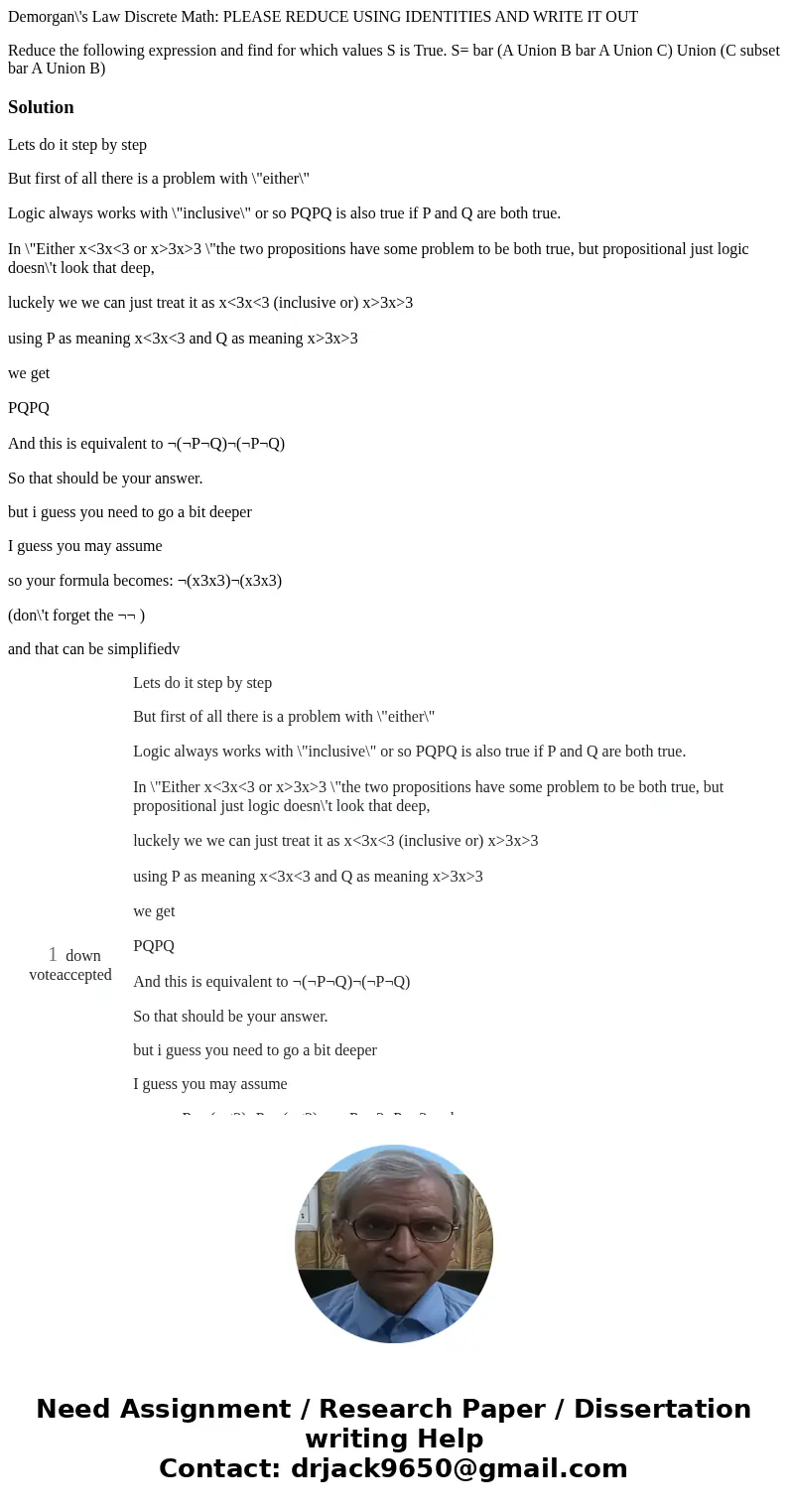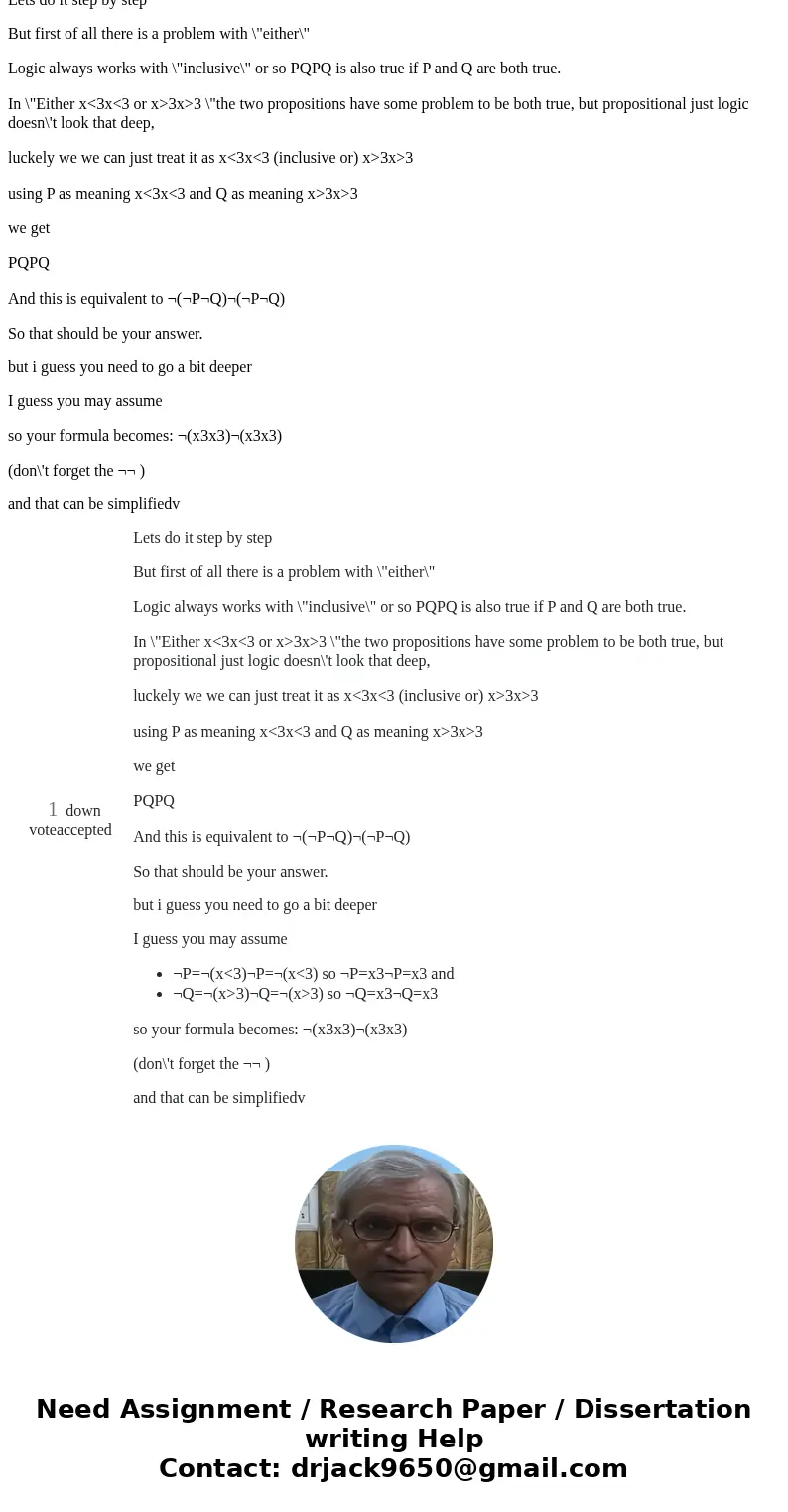Demorgan\'s Law Discrete Math: PLEASE REDUCE USING IDENTITIES AND WRITE IT OUT
Reduce the following expression and find for which values S is True. S= bar (A Union B bar A Union C) Union (C subset bar A Union B)
Lets do it step by step
But first of all there is a problem with \"either\"
Logic always works with \"inclusive\" or so PQPQ is also true if P and Q are both true.
In \"Either x<3x<3 or x>3x>3 \"the two propositions have some problem to be both true, but propositional just logic doesn\'t look that deep,
luckely we we can just treat it as x<3x<3 (inclusive or) x>3x>3
using P as meaning x<3x<3 and Q as meaning x>3x>3
we get
PQPQ
And this is equivalent to ¬(¬P¬Q)¬(¬P¬Q)
So that should be your answer.
but i guess you need to go a bit deeper
I guess you may assume
so your formula becomes: ¬(x3x3)¬(x3x3)
(don\'t forget the ¬¬ )
and that can be simplifiedv
| | Lets do it step by step But first of all there is a problem with \"either\" Logic always works with \"inclusive\" or so PQPQ is also true if P and Q are both true. In \"Either x<3x<3 or x>3x>3 \"the two propositions have some problem to be both true, but propositional just logic doesn\'t look that deep, luckely we we can just treat it as x<3x<3 (inclusive or) x>3x>3 using P as meaning x<3x<3 and Q as meaning x>3x>3 we get PQPQ And this is equivalent to ¬(¬P¬Q)¬(¬P¬Q) So that should be your answer. but i guess you need to go a bit deeper I guess you may assume - ¬P=¬(x<3)¬P=¬(x<3) so ¬P=x3¬P=x3 and
- ¬Q=¬(x>3)¬Q=¬(x>3) so ¬Q=x3¬Q=x3
so your formula becomes: ¬(x3x3)¬(x3x3) (don\'t forget the ¬¬ ) and that can be simplifiedv |
 Homework Sourse
Homework Sourse

